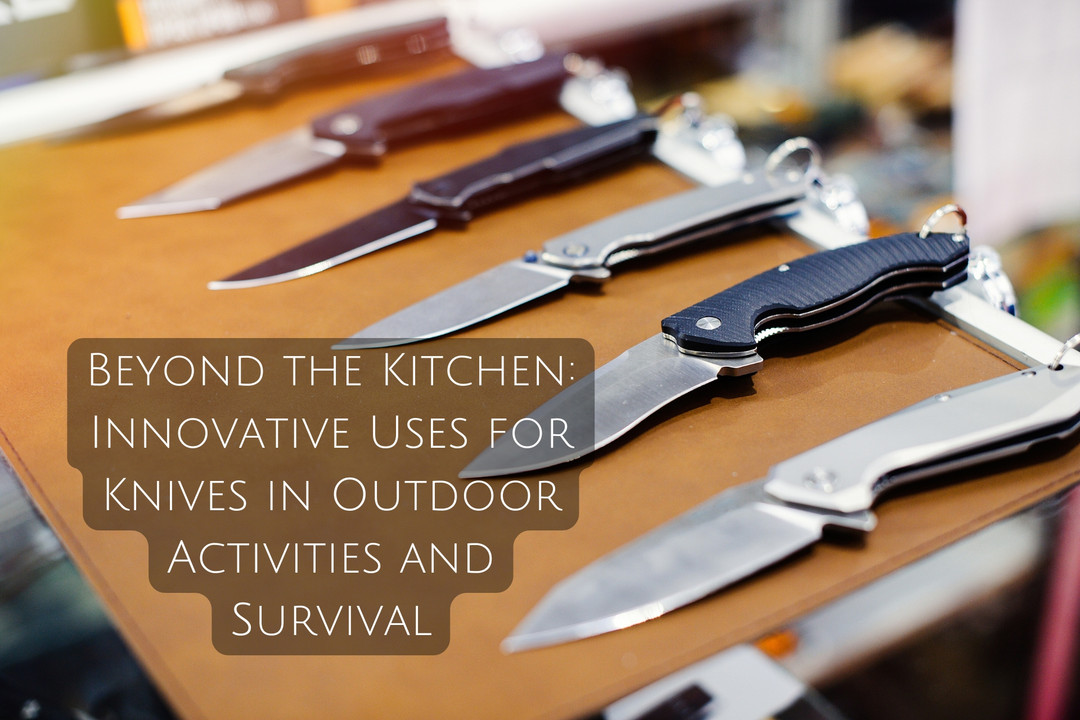Beyond the Kitchen: Innovative Uses for Knives in Outdoor Activities and Survival
The humble knife. A staple in kitchens worldwide, it's often seen as a purely culinary tool. But for outdoor enthusiasts and survivalists, a good knife is an invaluable companion. Let's explore how a sharp blade can become so much more than just a utensil.
The Bushcraft Knife: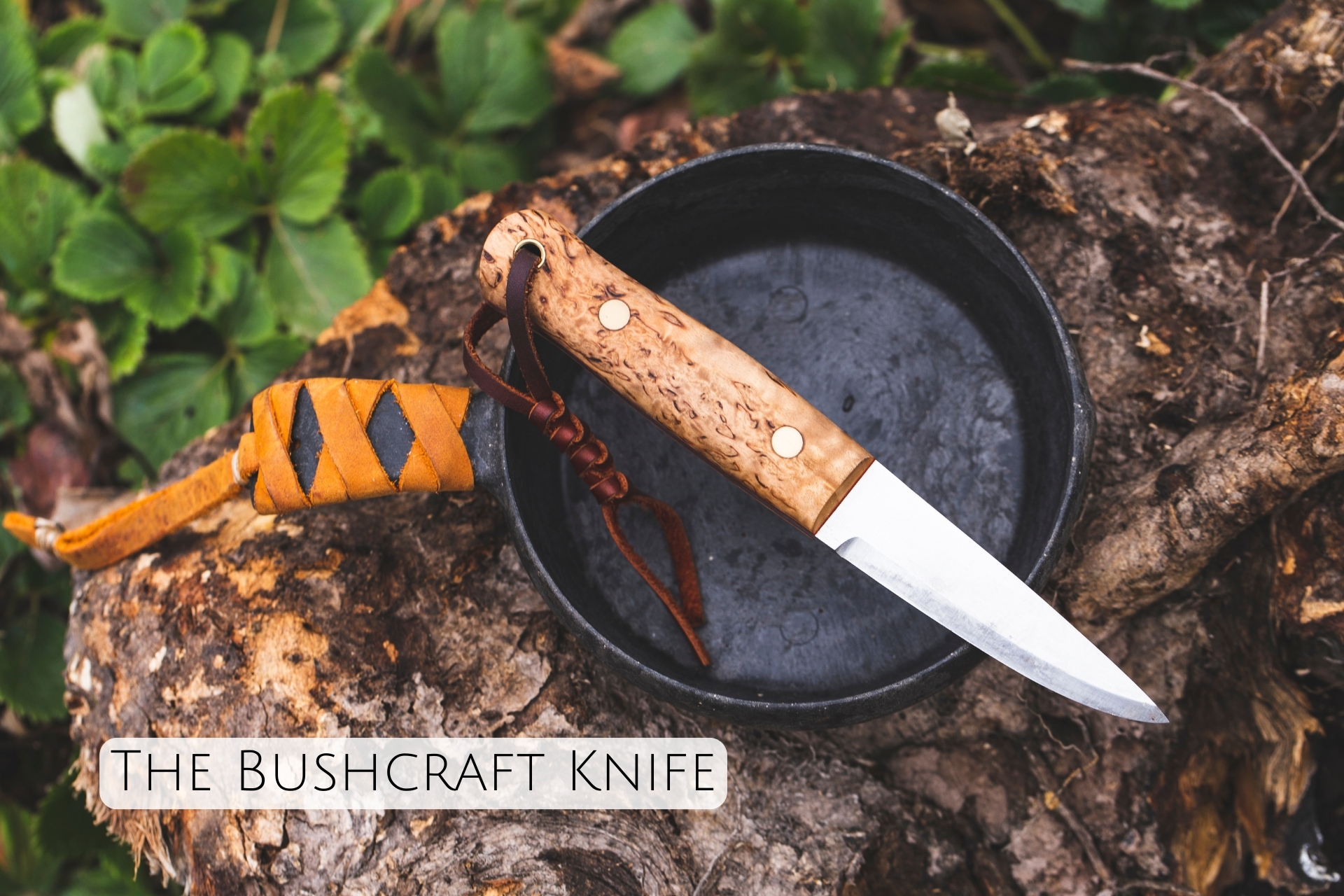
Bushcraft, the art of thriving in nature, relies heavily on a good knife. Here's how it shines:
- Shelter Building: From cutting poles for a frame to whittling stakes and crafting furniture, a knife tackles various shelter-building tasks.
- Firecraft: Shaving tinder, creating feather sticks, or even striking a spark with the spine against a ferrocerium rod – a knife aids in getting your fire going.
- Food Procurement: Whether preparing bait for fishing, cleaning and dressing small game, or simply cutting fruit for a snack, your knife becomes a food prep essential.
- Tool Creation: Need a makeshift spoon, a digging tool, or a snare trap? With some skill, your knife can craft basic tools for various needs.
Unexpected Knife Uses: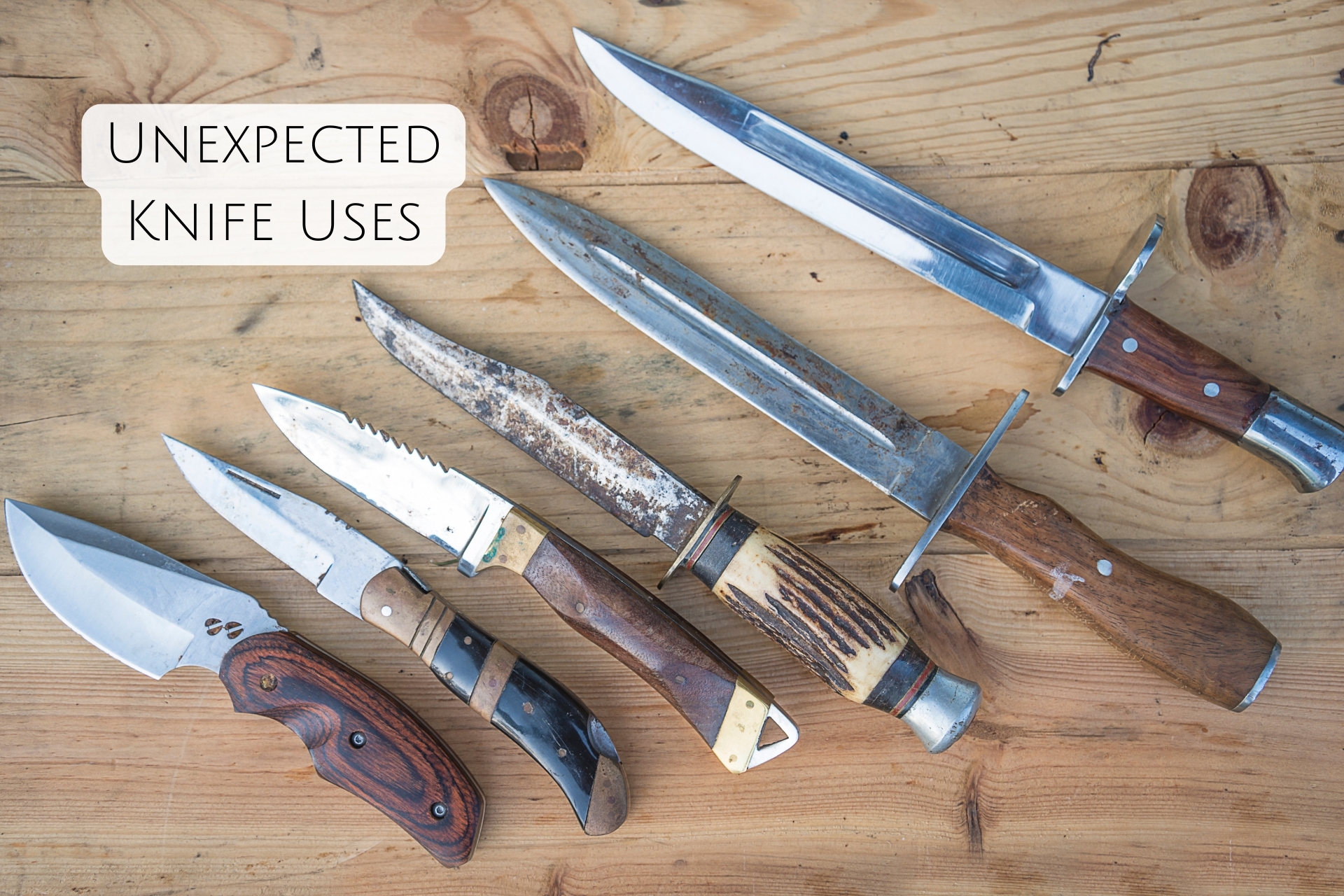
A knife's versatility extends beyond basic survival tasks:
- Emergency Signaling: Signaling for help is crucial. You can use a knife to clear brush for a distress fire or signal mirror, or even carve large SOS symbols on the ground.
- First Aid: While not a substitute for medical expertise, a sterilized blade can be used to carefully remove splinters or create a makeshift bandage.
- Navigation: Marking trails, scraping moss off a tree for north orientation (works in some regions), or even creating a makeshift sundial – a knife can be a helpful navigation tool.
- Gear Repair: A quick fix on a ripped backpack strap, shelter material, or fishing line? Your trusty knife can come to the rescue.
Types of Knives for Outdoor Use: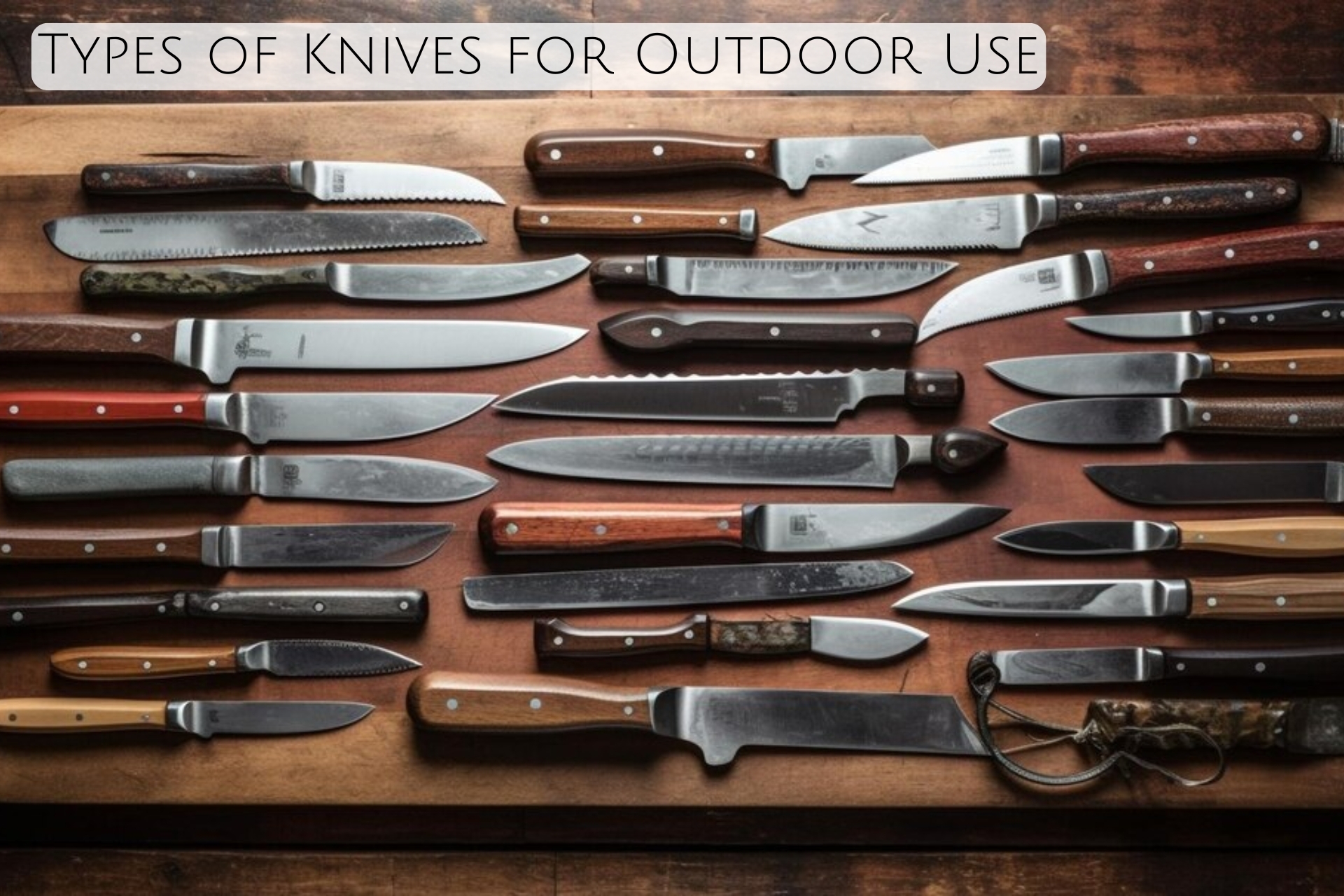
Fixed-Blade Knives: Fixed-blade knives offer unmatched strength, stability, and durability due to their tang construction where the blade extends into the handle for a full-bodied build.
Survival Knife: A survival knife prioritizes versatility and functionality in a survival situation. They typically have a thicker blade suitable for batoning wood, chopping tasks, and digging in addition to finer cutting chores.
Bushcraft Knife: A bushcraft knife is perfectly sized for wilderness tasks like shelter building, firecraft, and food prep . They are lighter than survival knives, making them ideal for carrying for extended periods.
Pocket Knife: A compact and convenient choice for everyday carry (EDC). They can handle light cutting tasks, opening packages, and basic repairs while remaining easily pocketable.
Multi-Tool: A multi-tool combines a knife blade with various other tools like pliers, screwdrivers, a can opener, a bottle opener, and more, making it a multifunctional problem-solver in a compact package.
Hunting Knife: Designed for skinning and dressing game, hunting knives typically feature a sturdy blade with a curvature that aids in precise cutting.
Machete: A machete is a large, heavy-bladed knife used for hacking through dense vegetation, clearing brush, and chopping wood.
Remember, knife laws vary by region, so be sure to check the regulations before carrying a blade outdoors. Always prioritize safety and handle your knife with respect for a successful and enjoyable outdoor adventure.
Choosing Your Knife for Outdoor Adventures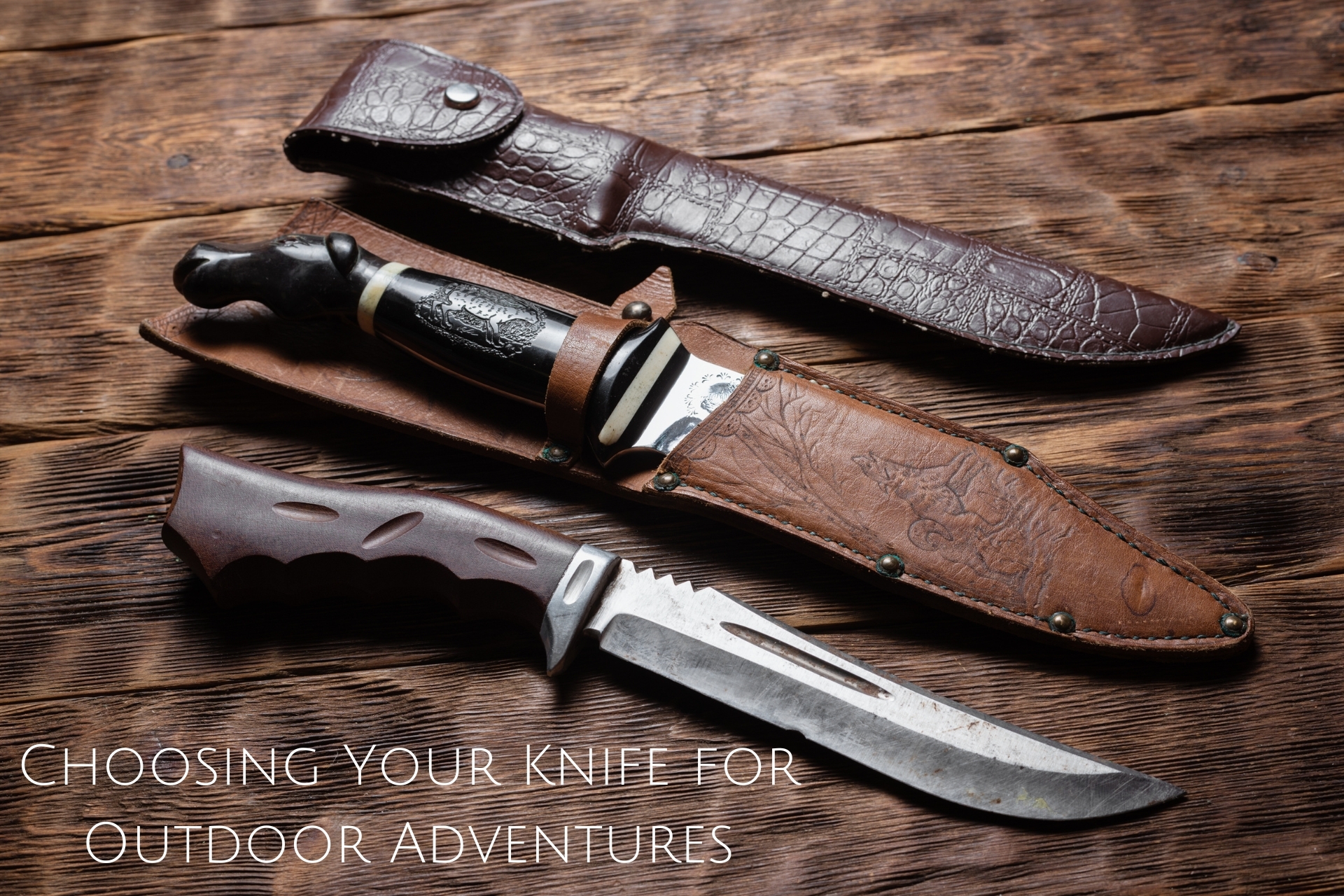
When selecting a knife for outdoor use, consider these factors:
- Size and Weight: A balance between functionality and portability is key.
- Blade Style: Drop-point blades offer good control, while clip-point blades excel at piercing.
- Blade Material: High-carbon steel offers a good balance of sharpness and durability, while stainless steel prioritizes corrosion resistance.
Toolmaking and Crafting: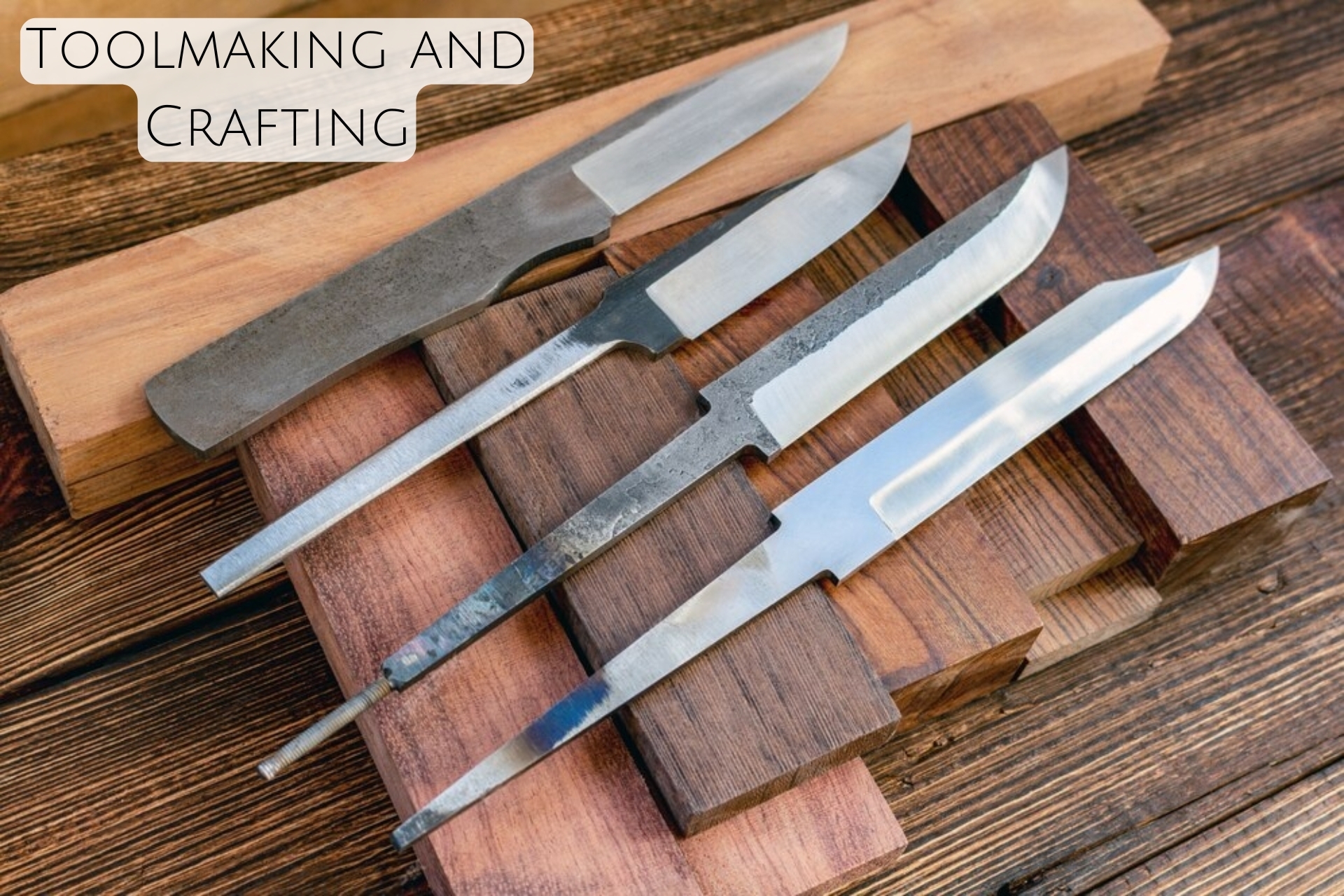
Folding Knife (Slipjoint): A slipjoint knife features a blade that locks into place using a friction joint rather than a locking mechanism. This allows for one-handed opening and closing, essential for detailed carving and tool shaping.
Chip Carving Knife: A chip carving knife has a small, sharp blade designed for controlled cuts and detail work in wood. The narrow profile allows for precise maneuvering in tight spaces.
Roughing Knife: As the name suggests, a roughing knife is used for initial shaping and stock removal of tool materials like wood or bone. The sturdy blade can handle heavy cuts without compromising control.
Hook Knife: Featuring a curved blade resembling a hook, this knife excels at carving out bowls, spoons, and other concave shapes in wood.
X-Acto Knife: A favorite among crafters, the X-Acto knife boasts interchangeable blades of various sizes and shapes, offering extreme precision for detailed cutting tasks on a variety of materials like paper, fabric, and thin wood.
Utility Knife: A utilitarian option, the utility knife features a retractable blade that can be snapped off when dull, ensuring a constantly sharp cutting edge for various crafting tasks like cutting cardboard, foam, and leather.
Swivel Knife: A swivel knife has a rotating blade that allows for intricate cuts at various angles, making it ideal for leatherworking and fine detail work on other
Stanley Knife: Often used in construction, Stanley knives find their place in crafting as well. They feature replaceable heavy-duty blades good for cutting thick materials like cardboard and matboard.
When choosing a knife for tool making or crafting, consider the material you'll be working with, the detail level required in your project, and your budget. Most importantly, prioritize a sharp blade and proper safety practices to ensure a successful and enjoyable crafting or toolmaking experience.
Conclusion:
In conclusion, the humble knife, often associated with the kitchen, reveals itself as a versatile and indispensable tool in outdoor activities and survival scenarios. From fire starting to shelter building, food preparation to first aid, and navigation to toolmaking, the applications of knives extend far beyond slicing vegetables or cutting meat.
Latest Blogs
Traveling with Your Dog: Essential Supplies for Safe Adventures
Traveling with your dog can be an incredibly rewarding experience, whether you’re heading to a new c...
Understanding Blade Angles: How They Affect Performance and Usage
Blade angle, often referred to as "bevel angle," plays a critical role in the efficiency and versati...
The Best Power Tools for Home Renovation: A Comprehensive Guide
Embarking on a home renovation project is exciting, but it’s also a big undertaking that requires th...
Tech in the Garden: The Rise of Smart Gardening Tools
Gardening has traditionally been a relaxing, nature-centric hobby, but with recent advancements in t...
Tech in the Garden: The Rise of Smart Gardening Tools
Gardening has traditionally been a relaxing, nature-centric hobby, but with recent advancements in t...
Security Lighting and Motion Detectors: An Underrated Defense Mechanism
When it comes to home security, many people focus on locks, alarms, and surveillance cameras. Howeve...

